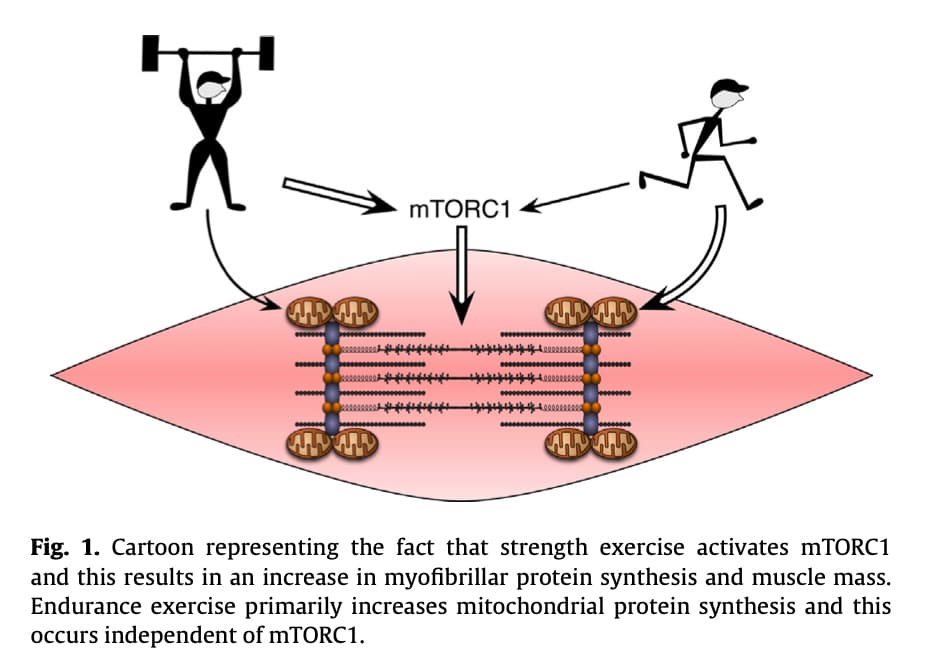Allow me to digress with this link:
Good find - thanks. Interesting paper… exercise does tend to upregulate MTOR1, which strangely seems to be counter to longevity (rapamycin of course lowers mTORC1, which most people think is the key factor that contributes to the lifespan and healthspan extension effects of rapamycin).
I wonder if anyone has figured out the exact tradeoffs and details in this issue. I will take some time to review and digest this paper.
Full paper available on Sci-hub.wf as usual: https://sci-hub.wf
https://sci-hub.wf/10.1016/j.semcdb.2014.08.013
4.2. Exercise and metabolic stress and the regulation of mTORC1 in other tissues
As discussed above, exercise results in a significant metabolic stress throughout the body. Since metabolic stress activates AMPK and this can result in the inhibition of mTORC1, it follows that exer-cise could lead to inhibition of mTOR in tissues such as liver, fat, and tumors [123]. Since mTORC1 plays a role in lipid biosynthesis [124],inhibiting mTORC1 through AMPK might decrease adiposity in liver and fat tissues [123]. In fact, activating AMPK with AICAR results in decreased mTORC1 activity and protein synthesis in the liver[125]. Since endurance exercise increases AMPK activity within theliver and fat [123], this suggests that endurance exercise may transiently block mTORC1 activity throughout the body. Since blocking mTORC1 with rapamycin can improve longevity [126], this might underlie some of the health benefits of habitual exercise. However, this overly simplistic and somewhat contradictory view on the control of phenotype by a single molecule needs to be tempered withthe statement that signaling molecules are highly dynamic both in their on/off time course and in their cellular localization. Further-more, they have differential effects depending upon what tissues they are active in. The importance of mTORC1 function for skeletal muscle health is unequivocal, however we believe that some of the effects of rapamycin on longevity may be mediated in part through mTORC1 inhibition in tissues other than muscle and we would suggest that rapamycin improves longevity in rodents in spite of its negative effects on muscle.
Conclusions
Exercise is a potent treatment for many diseases that reduce lifespan and quality of life. Many of the effects of exercise on quality of life likely reflect the ability of exercise to alter mTORC1activity within diverse tissues. In some cases, such as skeletal and cardiac muscle size, the effect of exercise on mTORC1 and the resulting change in tissue phenotype is clear. In other tissues, such as the brain, liver, and fat, the relationship between exercise, mTORC1 activation, and tissue phenotype and function has yet to be delineated. Over the next few decades, the importance of exercise in modulating mTORC1 and the resulting impact on health will become clear. From the existing data, exercise and mTORC1 will be shown to be central to improving not only longevity but also quality of life.

